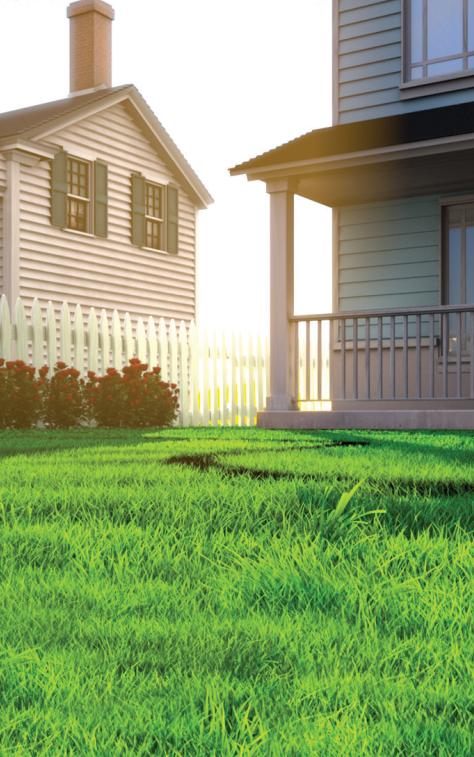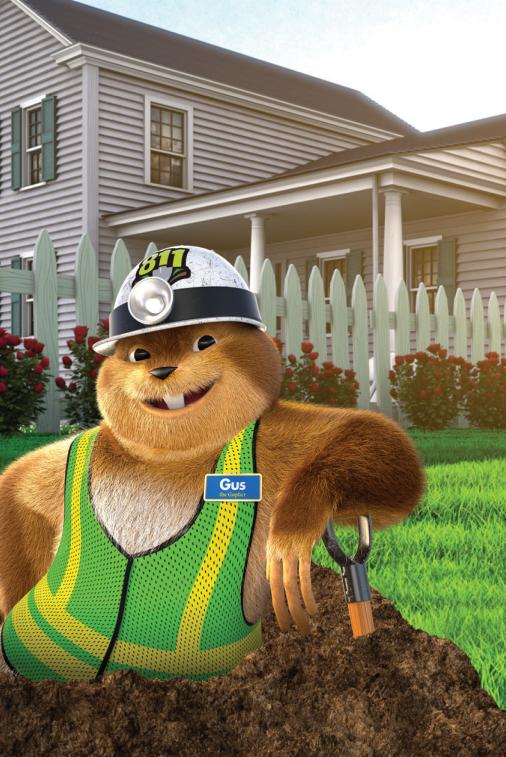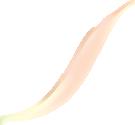
















(BPT) - If you enjoy time at home these days, you’re not alone According to TruGreen’s new survey conducted in collaboration with OnePoll, 69% of Americans spend more time at home than two years ago. And because homeowners enjoy being at home, it’s no surprise home improvement remains a priority, with lawns as a top investment in both time and money
While lawns are valuable to homeowners, so is their time Rather than tackling lawn maintenance, homeowners would rather be with family and friends (49%), doing outdoor activities (36%) or reading a book (33%)
But with spring around the corner and warmer weather approaching, now is the first - and best time for homeowners to prepare their lawns for the season ahead Homeowners should partner with a professional for their lawn care this season so you can spend more time doing things you love - while still achieving the lawn of your dreams. TruGreen®, the nation’s leading lawn care provider, breaks down tasks you can do, and those better left to professionals to save time and money.

Here are the top items to have on your spring lawn maintenance checklist:
* Prep your lawn mower for a fresh first cut. After a long winter, your lawnmower needs some love to work at its best Clean or replace the air filter, change the oil, sharpen the blades and check the spark plug. Once your mower is ready, the first cut is critical to remove dead blades of grass from the past season to wake up the lawn. Always
mow grass at the correct height, making sure you don’t cut over a third of its height during any single mowing Most grass types should be kept at least three inches tall, as longer, thicker turf helps combat weeds and conserve water in the soil


* Clear debris to allow your lawn to breathe. As temperatures climb, you may discover your lawn is covered in fallen leaves, sticks and other debris. If you don’t remove this debris, your lawn could get smothered and develop unsightly patches, since your lawn and its roots would be prevented from accessing sunlight, air, water and nutrients needed to thrive Clearing debris also helps professional lawn services be more effective.
* Quench your lawn’s thirst Every lawn requires a healthy amount of high-quality H2O While some will come from rainfall, during drier months you may need to use your garden hose or sprinkler system Aim for about one inch of water per week An easy way to measure is by spreading a few empty tuna cans across your lawn as you water When they’re full, that’s an inch

The spring season brings new beginnings and memories with loved ones outdoors Partnering with the pros for your lawn maintenance lets you maximize your time, so you can do what you love without compromising your outdoor space.
“Research shows 68% of Americans trust and hire professionals for home improvement tasks, and with the winter blues behind us, don’t miss out on this critical season to nurture your dream lawn,”said Brian

Feldman, director of technical operations at TruGreen “Whether it’s clearing weeds or providing a boost of nutrients to your lawn, partnering with a professional service can help ensure you’re on track for a healthy, green lawn all year”

Let the experienced professionals help, here are three tasks better left to the pros:
* Tackling weeds before they attack your lawn No one wants a lawn covered in weeds Preventive treatments are vital to help fend off annual weeds before they start growing Starting your lawn care at the right time and under the correct conditions - such as temperature and humidity - is crucial to prevent weeds from germinating, so consult a professional to identify when to start treatments.
* Fertilizing your outdoor space During winter, lawns stay in a hibernating state. Come springtime, they wake up with an appetite, so give your lawn a boost of nutrients with an initial dose of fertilizer A lawn care professional can ensure this treatment occurs at the best time and in the right amount to bring out the best in your lawn, trees and shrubs

* Tailoring a plan for pesky weeds Despite your best preventative efforts in the spring, annoying weeds may still pop up When this happens, a specialist can tailor a postemergent solution specifically for your outdoor space
Questions about recovering your lawn after being dormant all winter? Visit TruGreen com to ensure your lawn is on track for a healthy spring season.

The land we live on has some the richest soils in the world, which offers endless opportunities for anyone wanting to make a new living
Our ancestors built this country with the ideal that anyone can achieve anything here They packed up and left their homes, sailing to a new life while bringing new languages, cultures, foods, and even foreign plants and animals Settlers didn’t know that once a foreign species is taken out of its natural habitat, it no longer has normal checks and balances to keep it at bay.
One perfect example is the green anaconda now found in the Everglades of Florida. Not native, the anaconda has battled with the American alligator – which is native to the Everglades
for decades. The invasive threat endangers native species, creating an abnormal balance of nature
The same battle exists between native and invasive plant life, and this worldwide problem has taken root right here in Fremont County.
The U.S. Department of Agriculture defines and manages a list of noxious species in every state. Their definition for noxious weeds is defined as a nonnative invasive plant that is prioritized for management or eradication depending on what priority they maintain.
Noxious weeds have been around for quite a while. It wasn’t until the last few decades we as a nation have decided to try to remedy the problem. Many species are listed for their invasiveness and their ability to deprive other plants of necessary nutrients and resources, thus outcompeting, and eliminating all other native plants
Some noxious weeds are perfect hosts for uncommon plant diseases or invasive pests that could be detrimental to our open spaces and agriculture Other species may be listed due to toxicity to livestock, wildlife or even humans Other threats include erosion, decline in water systems, fire danger, and even reduced crops These are some of the factors considered for elevation of required management across the state
Colorado has 73 state-listed noxious weeds species that have been located somewhere within its borders One common weed is Russian thistle, or as many people call, it the ever-wonderful”tumbleweed”
Tumbleweeds are invasive annuals that line the sides of roads, buildings and pretty much any disturbed area. Though this species is not native to the United States, it is also not listed on the noxious weed list Why is that? The reason is simple
We as Americans lost this battle long ago Populations are so out of control, nearly all agricultural funding and labor would be allocated toward this particular weed application. This really doesn’t make sense economically, financially, or ethically for us to start treating. Current day situations with this plant are treated on a site-to-site basis, but it is a reminder of how our role can play an important part in weed management for the future As landowners, we can all prevent infestations like this Correctly identifying the problem species is most important There are many look-alikes, and having a keen eye to noticing the small discrepancies can mean accurate identification.
Also, it is helpful to know what your resources are for control and have an idea of your land management goals, before starting a project Though herbicides have been a game changer for reducing populations, they don’t always have to be the only solution. Using an integrated approach is great with larger infestations and preventing further spread.
Depending on the management recommendations of the plant, some other management methods may include hand-pulling, over seeding, shading, grazing, biocontrol releases,

and many more Don’t be afraid to reach out to those who may know about plants, such as your local weed managers, extension offices, conservation districts, or even the local garden shops There are many knowledgeable folks, agencies, and departments happy to get landowners started on their weed management goals
Please know that not every management plan will be successful on the first attempt If it didn’t happen overnight, it will likely not disappear in a day either Control takes time, even years in many cases The Earth heals at its own pace
Don’t be overwhelmed, though. Knowing is the first step to going forward. There are many others who have been down the same path and have found the other side.
You can view the list of noxious weeds species and receive more details about this at https://ag.colorado.gov/ conservation/noxious-weeds/speciesid Good luck out there and keep it healthy
Brittany Pierce is the Fremont County Weed Management Director She can be reached at Brittany.Pierce@fremontco.com.
with
Gus and RosieLearninghowtobesafearoundnaturalgaslinesisimportantforeveryone GustheGopherwantsyoutoknowthatcalling811beforeyoustartdigging tohaveutility-ownedlinesmarkedisthesafewaytostartaproject

Rosie the Skunk says that if you smell natural gas, you need to leave immediately!Fromasafedistance,call911andAtmosEnergy


(BPT) - Solid hardwood floors are beautiful and timeless, adding value to any property However, there’s a misconception that real hardwood floors are difficult to maintain. The truth is that they can last for decades, as long you follow a few simple steps on a regular schedule

In fact, the time that goes into maintaining hardwood floors isn’t much more extensive than any other flooring material The key is to practice regular care and cleaning for your hardwood to keep grit and dirt from scratching the wood
“Hardwood floors are special, and if properly taken care of, you can have a living, organic, premium floor that lasts for generations,”said Jen Meska, director of Merchandising for LL Flooring (formerly Lumber Liquidators) “But to keep them in top shape, it’s essential to have a regular cleaning schedule and be extra-mindful of any conditions in your home that could damage your floors.”
Tools, tips, and tricks






Meska says to start with the fundamental tools for caring for hardwood flooring: a dust mop for everyday cleaning, a vacuum for weekly cleaning, and a microfiber mop that can get damp (not wet!) for monthly, deep cleaning
To keep day-to-day dirt and grit off your floors, aim to sweep or vacuum weekly When using a vacuum for regular cleanings, opt for a soft floor attachment or hardwood setting that disengages the beater bar (this is the bar that rotates when cleaning carpet.) By disengaging it on hardwood and avoiding a vacuum or attachment with hard bristles, you can avoid any scuffing or scratching of your floors
If you have heavy furniture placed directly on your hardwood, be sure to use felt pads on the feet to avoid scratches, and replace them regularly This also includes furniture that is moved frequently, such as dining room chairs
Strive to do a deep clean monthly to ensure you pick up the dirt and grime that inevitably forms over time
A great hardwood flooring care set is LL Flooring’s Bellawood Floor Care Maintenance Kit, which comes with a bottle of floor cleaner, a mop head and handle, washable wet mop microfiber pad, dry mop pad and a variety pack of felt pads
This set is GREENGUARD Gold Certified, which means it’s third-party tested for low chemical emissions and therefore safe to use at home








It’s also urethane-safe and won’t leave a dull-streaky residue on your













































floors, so they’ll look refreshed when you’re done cleaning.

Relative to most other flooring materials, solid hardwood is sensitive to moisture, whether that be due to wet shoes or just changes in humidity Therefore, it’s important to keep any amount of standing water off the planks
That means ditch the traditional mop and bucket, which can leave behind water that could cause your floors to swell, crack or splinter
Another critical thing to avoid is harsh cleaning solutions which include


































































































ingredients like chlorine bleach, ammonia, pine oil or undiluted vinegar. These can dull your floors by affecting the protective finish, causing lasting damage






By following these simple steps, your hardwood floor should stay in good shape for many years to come
“The best thing about hardwood flooring is that it’s a sustainable, living, organic material that takes on its own unique character throughout its lifetime,”said Meska.“Each plank is unique and tells its own story, and with the proper care, they can serve as the design foundation of your home for generations”
Mark your calendar!


Canon Home & Garden Show is March 24th (10am-5:30pm) and 25th (9:00am-3pm). At the Pathfinder Center 6655 CO 115, Florence CO. our booth and register to win a goodies. One drawings each day.









(BPT) - Maintenance is an important part of home ownership, but many people delay tasks, thinking a few weeks or even months won’t do any harm. However, putting off home maintenance is risky because small issues that are simple to fix now can quickly lead to complex problems that are expensive to fix later
Spring is the ideal time to give your home a once-over both inside and out to flag any issues and create a maintenance to-do list According to the experts at State Farm, here are some top spring maintenance tasks to help protect your home:
Your roof provides fundamental protection of your home from the elements in all seasons Inspect your roof at least once annually for damage, discoloration, loss of granules and missing, worn or curling shingles If you have the skills, you can do this yourself, or, call a qualified contractor who can come and do an inspection.
Some additional things to keep in mind, especially during rainy spring months: Gutters and downspouts should be safely attached, clear of leaves and other debris, and have no leaks Position downspouts to direct water away from the home so it doesn’t impact the foundation. Also, check that flashing is secure - the thin, metal material that’s around windows, vents and chimneys to direct water away.
HVAC stands for your home’s heating, ventilation and air conditioning systems These systems work together to keep your home comfortable throughout the seasons Regular maintenance helps keep them working well today and extends their life in the future while also saving on energy costs
Start by setting a reminder every few months to replace filters Dirty filters can block airflow and make the HVAC system work harder, decreasing efficiency and increasing energy costs Then, schedule a spring maintenance check with a local HVAC professional Pros will often check the thermostat, clean or replace filters, lubricate moving parts, check refrigerant levels, inspect the condenser and coils, and investigate unusual noises
Garage spaces

Garages can quickly become cluttered and certain items pose risks, such as fuel that can start a fire or items that can be attractive to pests. Embrace spring by planning a day to clean out the garage so it is organized and safe
If you store any fuel in the garage, use dedicated, leak-proof containers out of the reach of children and pets, and away from potential sources of fire ignition such as water heaters or power tools. Be smart
about paint and home-improvement chemicals, too A shed away from your home may be a better storage spot for combustible items. Many people also store furniture, clothing and food in their garage, but these are all tempting to insects and rodents Clothing and furniture can also soak up dust and fumes that destroy their integrity, even if pests don’t As for food, it’s just too risky to store any in the garage Even nonperishables like canned goods can spoil due to temperature fluctuations in garage spaces, so opt to store extra food elsewhere. Smoke detectors
Get in the habit of checking your smoke alarms on a regular basis, such as at the start of every season. Do this by hitting the

test button on each device If you don’t already have them, make sure a smoke detector is located in every bedroom and living space. This small investment and maintenance step can help save lives.
Additionally, don’t wait until the alarms chirp at you to tell you batteries are low Once a year, replace all the batteries in all the alarms to give you peace of mind that these critical devices are set up to work well in an emergency
If you need assistance with any of these spring home maintenance tasks, consider hiring a qualified, insured contractor in your area. Reach out to your local State Farm agent for a list of trustworthy professionals who can help














Eating microgreens provides a range of health benefits. Microgreens are packed with vitamins, minerals, antioxidants, and other vital nutrients, making them a nutrient-dense food. They are a great source of dietary fiber, which can help with digestion and weight management They are also rich in phytochemicals, which can help reduce inflammation, protect against oxidative stress, and improve overall health
Additionally, microgreens can help boost your immune system, as they are high in vitamin C and other important minerals. Finally, microgreens are low in calories and fat, making them a great addition to any diet


There are a number of different types of seeds that are well-suited to growing microgreens. The most popular types are sunflower, radish, broccoli, arugula, and pea, but you can also experiment with other varieties




Purchase our Microgreen Growing Kits and you can have healthy, homegrown microgreens on your plate in just a few days! We also offer hands-on instruction weekly on Fridays at 5pm. To purchase growing kits, seeds, or to reserve your spot in a class, call 719-285-3991 or stop by 110 E Main Street in downtown Florence!


